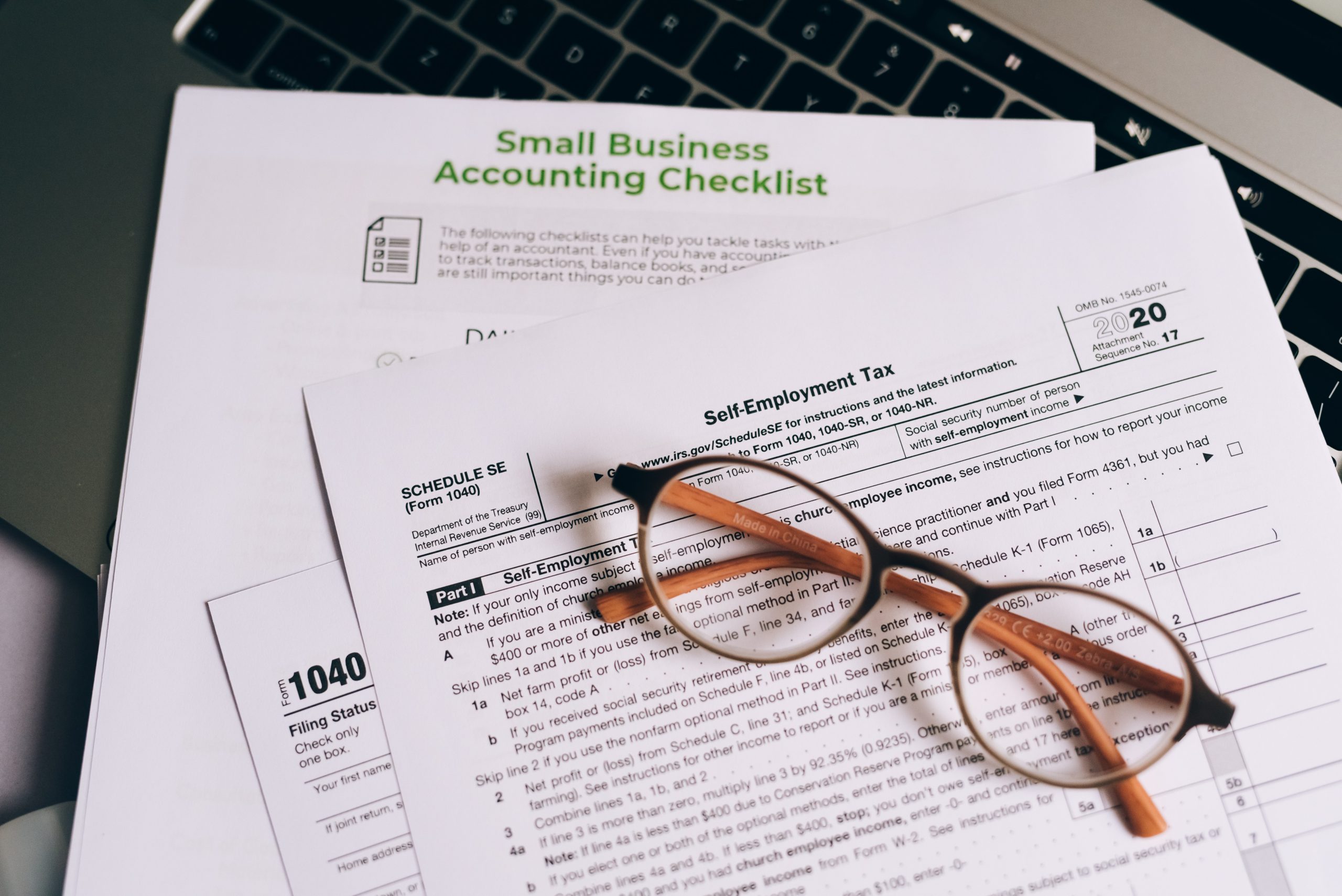
Small business loans are accessible from a wide range of lenders, both conventional and alternative, that specialise in small businesses. Among other things, a business loan may be used to handle cash flow concerns, capitalise on development possibilities, and even improve the value of a company’s assets. Making a plan for a loan advance of time is critical, as is understanding the documents that will be required by your lender once you submit your loan application.
Join the Accepted Platinum Credit Card Rewards Program!
Table of Contents
How do Small Business Loans Work?
Business lenders are organisations that specialise in lending money to businesses. The application procedure for a small business loan is done with the assistance of a business lender. Lenders earn money by charging fees and interest to the companies that borrow money from them. There are many various sorts of business loans, and each lender has its own set of criteria, which may include your bank or another lending institution, as well as the filing of the relevant paperwork and a thorough business plan.
Types of Bussiness Loans
The following are some examples of small business loans that a company owner could get.
SBA 7(a) Loan
An SBA 7(a) loan is a Small Business Administration-guaranteed loan. To get an SBA 7(a) loan, you must deal with qualified lenders that lend to firms that fulfil SBA guidelines. These loans are ideal for new and growing enterprises with bad credit. Among the requirements for a loan are such as operating a profitable business, being an SBA-defined small business and making transactions inside the US or its territories. Be able to invest a reasonable sum. Use personal assets before requesting SBA financial aid. Prove the necessity for a loan. Not be in default on past US government loans. A 504 loan is another popular SBA product, but it is designed for small enterprises wanting to finance commercial real estate or heavy equipment.
SBA Disasters Loan
The SBA offers disaster loans to enterprises that have been hit by a calamity, like the Covid-19 outbreak. Injured firms may apply for a COVID-19 Economic Injury Disaster Loan. Small enterprises affected by the Covid-19 epidemic are eligible borrowers. Businesses in any US state, territory, or Washington D.C. could apply for loans. Loans could be utilised for working capital, rent, utilities, as well as fixed debt payments. Payment in advance is free. and The first year’s payments are postponed, but interest accrues. Small companies may apply for an EIDL loan directly on the SBA website.
Working Capital Loan
In most cases, working capital loans are given by banks. The cash may be used for almost any commercial purpose. Not the whole amount borrowed, but the amount utilised that accrues interest. Cash flow is the lifeblood of every firm. A lack of finance may lead to company failure. Working capital loans do not require a business owner to sell equity in their firm. The company’s owner retains complete ownership and control. You may also use working capital for anything your firm requires. This provides you control over the funds. Working capital loans are typically for a period of 30 days to one year. For small firms, such loans generally range from $5,000 to $100,000.
Loan for Equipment
Through the use of an equipment loan, small firms may purchase equipment, cars, and software. An initial down payment of 20% of the total purchase price is often required, and a loan secured by the equipment is made available. A typical loan amortisation time is two to four years, with interest paid every month and the principal paid off throughout the loan. Loan amounts typically vary from $5,000 to $500,000, with interest accruing at either a fixed or variable rate depending on the loan type. Equipment loans may be organised in a variety of ways, including as equipment leases.
Loan for Medium-Term Repayment
In only two weeks, you may be authorised for a medium-term alternative loan and get the financing ranging from $50,000 to $2 million making this a fantastic lending choice for small company owners. Interest rates, on the other hand, vary and may reach as high as 20%, which is more than double the rate of a bank loan or SBA loan. There are repayment durations ranging from one to five years.
Short-Term Loan
Short-term alternative loans have several benefits: Your loan may be granted and financed the same day you apply if you have good credit and have been in the company for a year. But all this ease comes at a cost as the short-term loan APRs (annual percentage rate) may vary from 8% to 80% depending on your credit score. Payments are made daily or monthly for three to eighteen months.
Steps to Get a Small Business Loan
To acquire a small business loan one must follow the following aspects to move ahead smoothly.
Specify Your Business Needs
Before approaching a lender for a small business loan, evaluate what your company need. Loans from lenders may have use restrictions. You must know what you want in advance to get the best loan.
Used to increase working capital. This may include seasonal funding, salary, rent, or debt repayment. Or you need a small company loan to pay for a long-term fixed asset. This is a loan application for furniture, real estate, machinery, or equipment. You may want to rebuild or build to broaden your reach. The Small Business Administration’s online lender match service will assist you to identify lenders that provide the loan type you need.
Find a Lender
Lenders want cash flow to verify the capacity to repay a loan, which may be tough to get in the first year. New company owners often depend on personal or business credit cards. When you’re ready to apply for your first small business loan, you must first evaluate which loan type best fits your financial and credit profiles, as well as the reasons you need funding. Consider it a chance to shop. Some lenders do not make specific sorts of loans, therefore you may be authorised for a loan at another institution.
Verify Your Eligibility
Each lender and lending programme has its own set of requirements. You will be asked how you’ve funded the company thus far. Most lenders will also want to see your first investment. They all have common criteria such as the following:
- The loan’s purpose
- Your business history
- Credit rating
- How your company makes money
- Your company’s location and size
- Perceived repayment capacity
Collect the Required Paperwork
Following your assessment of your loan choices and determination of which form of loan is best for your business, it’s time to acquire the necessary documentation to submit your loan applications. To become eligible for the small business loan, you’ll need to have all of your necessary documentation available for them to check. It doesn’t matter who your lender is; the basic least you’ll need on hand the next day is as follows:
- Your company’s business strategy
- Predictions on the financial situation
- Credit history, as well as leases and licences, are required.
- Bank statements, as well as income tax, returns
- Resume demonstrating relevant industry knowledge and expertise
- Collateral to serve as a guarantee for the loan
Apply for the Loan and Get the Money
Now you are ready to apply for the loan. You can apply for many small business loans in around two weeks. Applying for more than three loans can negatively impact your credit score. So go for one at a time. You will be notified of approval by the lender, and then your loan will go through the underwriting procedure, where all of your information will be checked. If all paperwork is in order, you will be sent a formal loan agreement to sign. But before you sign read the document properly and understand the loan’s conditions, interest rate, payback timeline, and any other costs.
Best 4 Small Bussiness Loans
BlueVine solely provides business checking and credit accounts. The line of credit may give your small company immediate cash flow that you can repay. The annual percentage rates on BlueVine lines of credit may be fairly high, reaching over 70% in some cases, and payments should be made weekly or monthly, therefore you may want to investigate an alternative financing option if your income changes month to month.
For same-day financing, BlueVine charges a $15 fee with direct wire transactions. ACH transfers are free but may take up to three days to clear. To qualify for a BlueVine line of credit, your company must be an LLC or corporation, have been operating for 6 months, generate at least $10,000 monthly or $120,000 yearly, which is $20,000 more than rivals, and have a personal credit score of 600.
Fundbox is best for cash flow predictions. Its tool allows you to link your compatible company accounts to examine past cash flow forecasts. You can also simulate future transactions and receive warnings if your cash flow falls below a certain level. However, given that the new Insights function is still in beta, it may be valuable for established organisations looking to forecast income changes. It has no prepayment penalties or origination costs. It does levy draw fees on its lines of credit but gives a three-day grace period for missing payments.
To be eligible for a Fundbox loan or line of credit, your company must have been utilising a suitable business bank account for three months before applying. You must also have a minimum credit score of 600 and a minimum yearly income of $100,000.
National Funding is among the few small business lenders that expressly target bad credit clients. It accepts credit scores as low as 500 for new clients and 475 for existing customers and offers a department dedicated to helping those with weak credit get a small business loan. National Funding also evaluates yearly income and years in operation but does not need collateral.
Customers that pay off their remaining amount within 100 days of signing their contract will get a 6% early payment discount on equipment financing and a 7% early payback discount on working capital. Customers must pay in full, be current on payments, and have acceptable credit to qualify for the early payback discount. National Funding does not provide typical rates, fees, or further qualifying criteria.
OnDeck is great for prepayments and rewards. If you qualify for this benefit, you might avoid paying any outstanding interest on a loan you paid off early. If you don’t qualify for the prepayment incentive, you’ll still owe 75% of the interest. As a result, you may wind up paying more for your loan. OnDeck also demands consumers to sign up personal guarantee as well as consent to a blanket lien on their company assets. If your firm falls on the loan, you are responsible for repayment.
To qualify for the short term loan with OnDeck, you need at least $100,000 in annual sales, a FICO score of 600, and one year in business. Despite the company’s claims that their average customer is 3 years old and has a 650 credit score. OnDeck’s average rates of 54.24 per cent for term loans & 48.06 per cent for a line of credits.
Conclusion
When it comes to financial solutions, you have numerous options as a small business owner or as someone who is just starting. Terms, interest rates, and qualifying requirements might vary depending on the lender and loan product, and each circumstance has its own set of perks. Prepare as many qualifying documents as possible to assist your lender in identifying the best match for your small business and base your selection on the unique objectives and demands of your company.



